OMG Certified UML Professional 2 (OCUP 2) - Advanced Level Questions and Answers
Choose the correct answer:
What must a modeler do to use an Action that coordinates other Actions?
Choose the correct answer:
Which capability Is provided by the Profile mechanism?
Choose the correct answer:
Given the following diagram fragment:
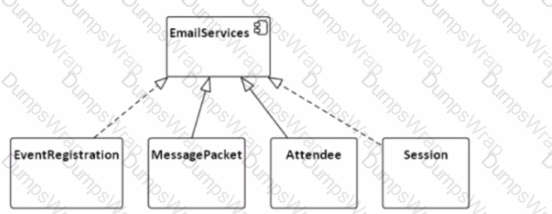
Which review comment is valid and applicable?
Choose the correct answer:
You are asked to provide UML model content such that other modelers may use the Classes of your model as modular, partial specifications to be more fully specified by their models. You decide to provide a Vehicle Class that represents a partial specification of automobiles and allows tailoring of this class through the other modelers' choices of kinds of propulsion such as a gasoline motor, an electric engine, or a manual cyclesystem. You want to limit whichClass kinds the other modelers can choose as their propulsion system.
Which tactic appropriately exploits UML's syntax and semantics for modular reification?
Choose the correct answer:
In a model of a commercial transaction, actors might exchange euros, pesos, and dollars
Which figure illustrates compliant use of UML information items for these currency exchanges?


Choose the correct answer:
What two protocol state machine interpretations can be defined?
Choose the correct answer:
Consider the following diagram:
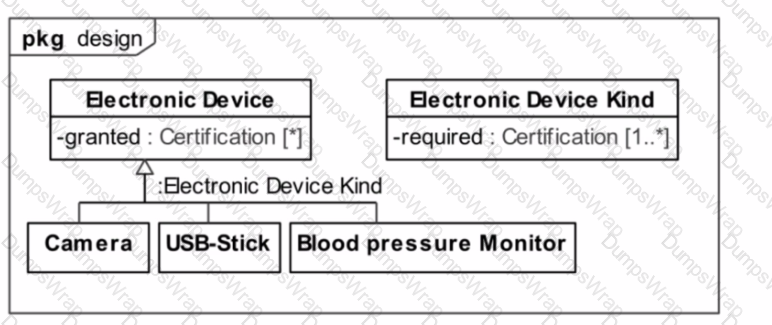
Which statement is correct about the diagram?
Choose the correct answer:
Which statement defines Alf Input text?
Choose the correct answer:
Consider the following diagram:

action 1 executes the classifier Behavior of the input object What kind of Action is action 1?
Choose the correct answer:
Consider the following diagram:

When this behavior is executed, which event will occur last?
Choose the correct answer:
A group of programming language designers want to create classes that model typical data collections such as arrays, lists, maps. etc.
Their design must satisfy three conditions:
1. The collections must be parameterizable to support any data type.
2. Some collections must inherit from other collections to leverage reuse of functionality.
3. The implementation of the collection functions cannot be overridden.
Which UML concept should these designers use?
Choose the correct answer:
Which can be added to a redefined operation?
Choose the correct answer:
Where does UML explicitly intend String Expression elements to be used?
Choose the correct answer: Consider the following definition:
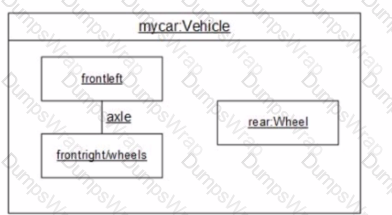
Which statement is correct about elements referred to in the illustration?
Choose the correct answer:
Consider the following diagram:

What does the string {guarded} mean?
Choose the correct answer:
An organization has determined that they want to add the capability to create and add requirement elements to their UML models. They also want to create a unique relationship for tracing requirements to other model elements.
What is the appropriate approach to do this?
Choose the correct answer:
What happens when an exception is raised by an Action within an Activity that has been invoked asynchronously?
Choose the correct answer:
What is the difference between a ValueSpecificattonActlon and a CreateObjectAction?
Choose the correct answer:
Consider the following diagram fragment:
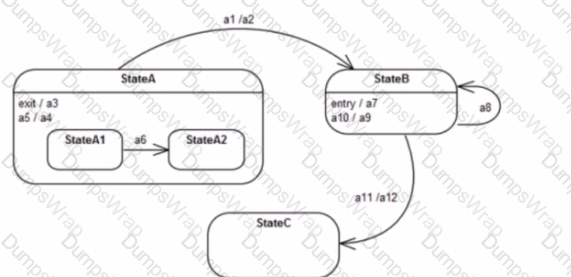
Assume that the system is in StateAl
Which sequence of behaviors could be executed in moving the system to StateC?
Choose the correct answer:
Given the following fragment from a profile definition:

Which statement is correct regarding the application of the profile?
Choose the correct answer:
What is the main purpose of the concept of Extent in MOF?
Choose the correct answer:
Consider the following profile:
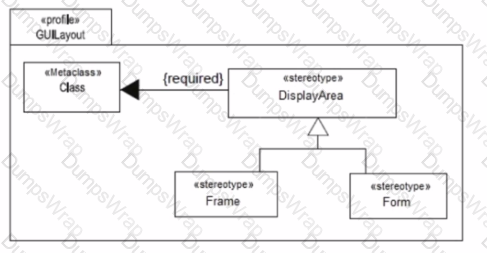
Which statement is true?
Choose the correct answer:
What characterizes the generalization relationship between two Classifiers wherethe child can NOT be substituted for the parent?
Choose the correct answer:
Which statement should be taken into consideration when extending a UML metaclass with a stereotype?
Choose the correct answer:
Which class sits at the top of the MOF class hierarchy?
Choose the correct answer: Consider the following piece of UML definition:
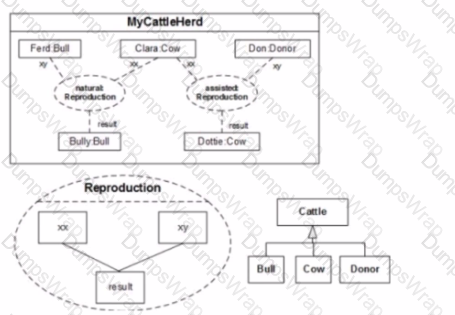
What is the typing of xx. xy and result?
Choose the correct answer:
Consider the following diagram:

What could be substituted for myTypel?

